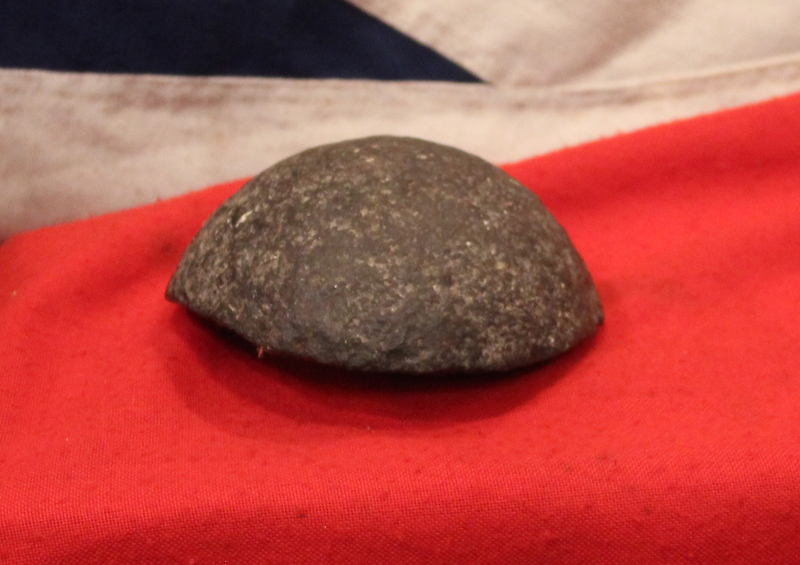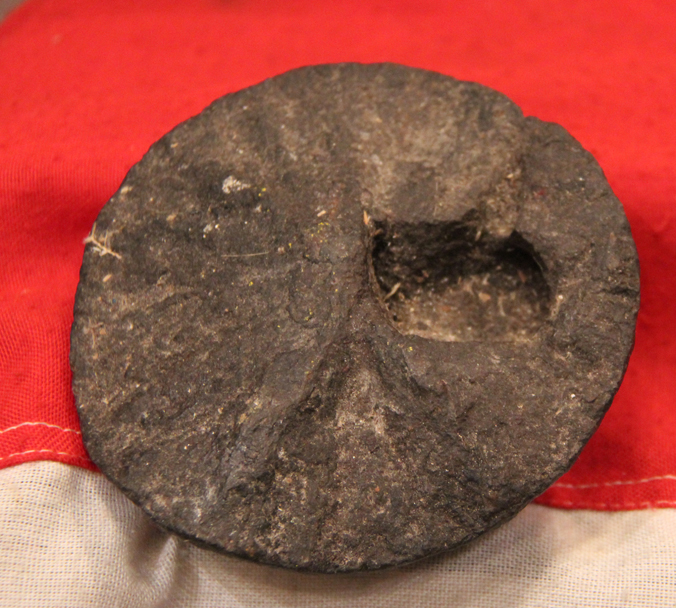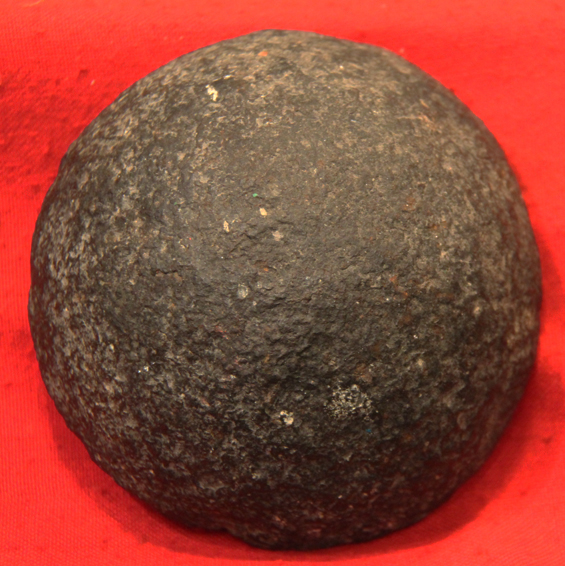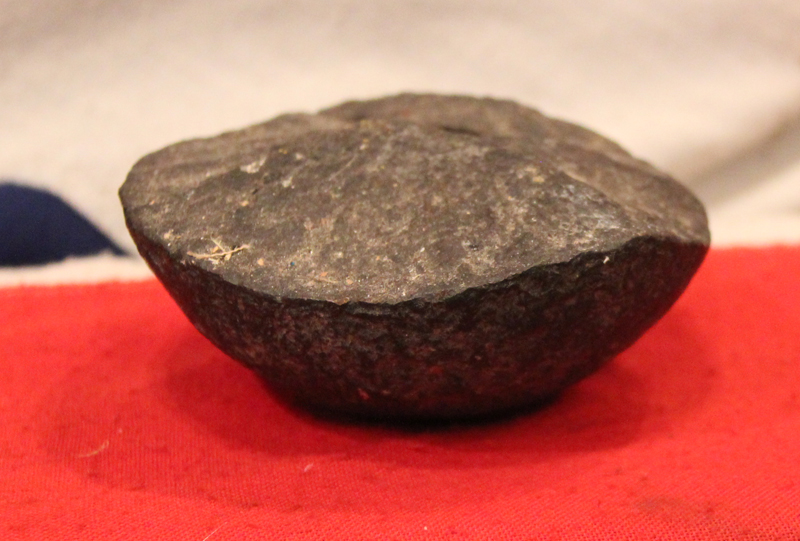An Incredible and Historic Napoleonic Wars Battle Site Recovered Exploded Solid Shot 12 Pounder Cannon Ball
Battle field recovery. With less than 50% remaining, the ball has hit its target, and split asunder.
Within the ball is an air pocket which may explain its split in two on impact.
Thomas Blomefield, as Inspector-General of Artillery, introduced a new system of Ordnance from 1784 onwards. His system of gun tubes was based around two standard lengths: that of 17 calibres and that of 13. Seventeen calibre tubes were used for the 'heavy' or 'long' pieces with the 'light' and siege/garrison guns having tubes of 13 calibres. The calibre of all 12-pounders was 4.623 inches.
Blomefield designed three types of 12-pounder, each being specialised towards a particular function. The heavy 12-pounder was used in garrison and siege work; the medium was used in the field and the light for the horse artillery. As the Napoleonic wars progressed, however, the medium 12-pounder became the sole weapon of its class.
The medium 12-pounder had a gun-tube that was 6 feet 6.66 inches in length and it weighed 18.0 cwt; an example cast by John and Henry King in 1795 at the Royal Armouries Museum, Leeds, has a length of 6 feet 3 inches and a weight of 18 cwt 9lb. A medium 12-pounder also survives with its original block-trail carriage in Montreal. The Royal Artillery used 12-pounder field guns in almost all of their major operations and furthermore it was used by the Royal Horse Artillery. See; Wellington's Big Bang: the British 12-pounders By Anthony Leslie Dawson
Code: 21295
245.00 GBP




